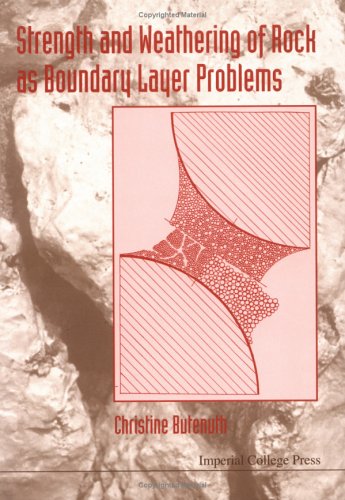

Most ebook files are in PDF format, so you can easily read them using various software such as Foxit Reader or directly on the Google Chrome browser.
Some ebook files are released by publishers in other formats such as .awz, .mobi, .epub, .fb2, etc. You may need to install specific software to read these formats on mobile/PC, such as Calibre.
Please read the tutorial at this link. https://ebooknice.com/page/post?id=faq
We offer FREE conversion to the popular formats you request; however, this may take some time. Therefore, right after payment, please email us, and we will try to provide the service as quickly as possible.
For some exceptional file formats or broken links (if any), please refrain from opening any disputes. Instead, email us first, and we will try to assist within a maximum of 6 hours.
EbookNice Team

Status:
Available0.0
0 reviews
ISBN-10 : 1848161658
ISBN-13 : 9781848161658
Author: Christine Butenuth
This book is addressed mainly to younger geoscientists and students of geologically related subjects. It discusses: (1) the concepts, definitions and experience of strength, particularly rock strength, with application of experimental techniques; (2) the physical-chemical aspects of the strength of pure phases; (3) strengthening of grain packings by “intermolecular forces”; (4) the behaviour of Buntersandstone samples underwater and lessons for understanding weathering processes; (5) deductions concerning the distribution of substances and forces in Buntersandstone samples from observing the response of samples underwater.The urgency of environmental studies has been the main driving force for this book. The discussion of single problems is wide-ranging, particularly for chemical and physical topics, so as to enhance the reader's understanding. The book is more a research account than a textbook. Thus, no “completed”, well-defined subject area is presented; on the contrary, many questions are raised which should form the basis for future research. The book has been written to stimulate lively debate.
1 Strength in Particular Rock Strength: Concepts, Definitions and Experimental Techniques
1.1 Rock as a Mechanical Mixture of Phases: A Composite with History
1.2 Properties of Mechanical Mixtures: Composition and Construction
1.2.1 The Essential Distributions of Solid, Crystalline Particles in Space
1.2.2 Porosity and Its Determination as well as Some Remarks on Pore Shapes
1.2.3 Intergranular Materials (Cements)
1.2.4 Strength and Notch Systems at the Sample Surface
1.3 The Physical Definition of Strength: A General Measuring Instruction
1.3.1 Experimental Methods for the Determination of Strength of Rock
1.4 Physico-Chemical Reactions Suitable for a Selective Destruction of Rock Structure
2 Physico-Chemical Elements of the Strength of Pure Phases with Ionic Linkage
2.1 Force- and Energy-Distance Functions
2.1.1 Formation of Ion Pairs
2.1.2 Formation of Ion Chains
2.1.3 Force-elongation Curves for Uniform and Composed Chains
2.1.4 Estimate of the Theoretical Strength
2.1.5 Silicic Acid Chains
2.2 The Lattice Energy
2.3 Strength According to Orowan's and Griffith's Considerations
2.4 The Order of Magnitude of Thermal Surface Stresses for a Central Symmetric Phase Arrangement
2.5 Surface- and Interfacial-Energy
2.6 Overview of the Problems of Strength in Relation to Different Bondings in Materials
3 Strengthening of Grain Packings by Intermolecular Forces
3.1 Surface Tension of Liquid Water in Selected Simple Systems
3.1.1 The Stresses Resulting from Wetting a Solid by a Liquid
3.1.2 Effect of Adhesion Tension in Selected Simple Systems
3.2 Water Strengthened Grain Packings
4 The Behaviour of Sandstone Samples under Water; Weathering Processes
4.1 Definitions and Conventions
4.1.1 Sign Conventions for Forces
4.1.2 Swelling of Rocks
4.1.3 System and System Changes
4.2 Direct Observations and Photographic Registration of the Bunter Sandstone/Water System
4.2.1 Averaged Reaction Temperature and Weathering Regime on the Surface of the Earth
4.2.2 Results of Direct Observation by Photographic Registration
4.2.3 Inorganic-chemical Brutto Analysis (EDX) of the Mechanically Distinguishable Phases
4.2.4 Preliminary Remarks on the Morphology of the Suspended Phases
4.2.5 Substances and Products of Lateritic Weathering Set Free when Immersing Bunter Sandstone Sampl
4.2.6 Observations on Volume Changes of Bunter Sandstone Samples when Ageing in Water
4.2.7 Whereabouts of Pore Air
5 Conclusions from the Ageing Experiments of Bunter Sandstone in Water and the Distribution of Subst
5.1 Models for the Material and Pore Distribution in Bunter Sandstone
5.1.1 Experimental Pore Diameter Distribution Function
5.1.2 Diameters of Colloidal Sediments from Suspensions of Landslide Masses of Murlenbach Eifel (198
5.1.3 Diameters of the Colloidal Suspension Load of Rivers
5.1.4 Contact Bridges and Their Load Bearing Cross Section
5.1.5 Local and Time Dependent Influences which Can Affect the Carrying Cross Section of Sandstone S
5.2 Summarising Remarks in View to the Results of the Ageing Experiments
strong physical weathering
strong chemical weathering
strong mechanical weathering
rock weathering examples
weathering and erosion of rock forms
Tags: Strength, Weathering, Boundary Layer, Christine Butenuth